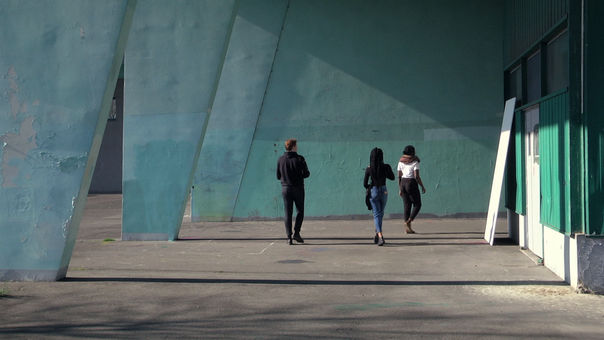Against the Teenage Wasteland
By Iván Zgaib

© Sophie Dulac Productions
Claire Simon’s Panorama film PREMIERES SOLITUDES begins with a sympathetic act: the camera accompanies some lonely teenagers on their walk to school. This caring effort is reminiscent of Jean Rouch’s LA PYRAMIDE HUMAINE as it observes a group of young people bonding in front of the camera. Thus, the documentary finds its greatest strength by creating a space of encounter, which might not have been possible otherwise. Even though they go to the same public school, these seven kids only meet because of the film.
Structured in vignettes, PREMIERES SOLITUDES is mainly composed of scenes of the protagonists exchanging their experiences as teenagers. Simon uses simple but precise camerawork that conveys a sense of both loneliness and companionship. This complex approach is accomplished by focusing the camera on the teenagers’ discussions. The overall lack of adults, who only enter the frame a few times, reinforces their sense of abandonment. Even the school corridors look empty, occupied for the most part only by the seven teenagers. But this sorrow mutates when the characters keep learning about one another. The development of a collective bond breaks through the screen and redefines PREMIERES SOLITUDES as the record of an evolving experience: witnessing the characters as they realise they are not alone, the film depicts their dramas as a shared conflict of their age and generation.
At times, however, the conversation topics become redundant, and PREMIERE SOLITUDES tends to portray adolescence as a universal experience. A more layered vision is found when the film manages to include the social and cultural particularities of each protagonist. The stories of an African immigrant and a discussion about money between two other girls suggest, maybe too lightly, that the character’s problems are also marked by class and racial conditions.
In spite of these weak points, PREMIERES SOLITUDES ends on a moving note, as if Claire Simon had succeeded in laying out an emotional landscape of adolescence that is raw without ever feeling exploitative. So the movie’s deepest drive is mainly humanistic: the camera as a facilitator of communication that restores an ethical dimension of cinema. Under Simon’s gaze, people cannot really be alone as long as film keeps existing.

